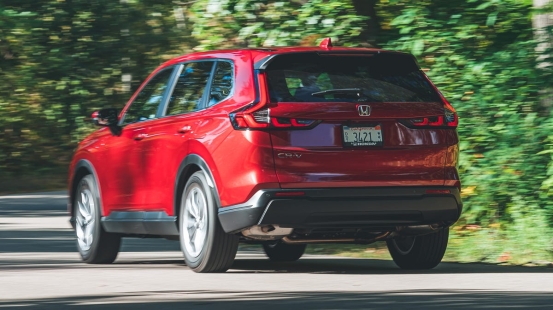The 2025 Honda CR-V remains a leading choice in the compact SUV segment, offering a combination of reliability, modern technology, and versatile powertrain options for families and daily commuters.

Overview and Design
Part of the sixth-generation CR-V introduced in 2023, the 2025 model refines its well-known design with subtle updates that enhance a confident and contemporary look. A bold grille, crisp body lines, and sharp LED lighting underscore Honda’s signature styling.
Inside, the cabin features upgraded materials and a user-friendly digital interface. Drivers benefit from intuitive controls and a responsive infotainment system, while passengers enjoy roomy seating and a smooth, comfortable ride. Early owners emphasize the CR-V’s dependable performance and comfort-focused handling.
Performance and Powertrain Options
The CR-V offers two main powertrain choices. The standard 1.5-liter turbocharged four-cylinder engine produces approximately 190 horsepower and 179 lb-ft of torque, paired with a CVT. The hybrid variant combines a 2.0-liter engine with dual electric motors, delivering around 204 horsepower. Most trims offer front-wheel or all-wheel drive.
On the road, the CR-V provides a composed and comfortable driving experience. The hybrid’s smooth acceleration, responsiveness, and fuel efficiency are highlights. Honda’s suspension balances comfort and stability, absorbing road imperfections while maintaining control, with towing capacity at 1,500 pounds for standard models and 1,000 pounds for hybrids.
Interior, Space, and Comfort
The interior prioritizes practicality and passenger comfort. Rear legroom measures around 39.3 inches, and cargo space is roughly 39.3 cubic feet behind the rear seats, expanding to 76.5 cubic feet with seats folded.
The dashboard design is clean and horizontal, featuring a 7-inch display on base trims and a 9-inch touchscreen on higher trims. Soft-touch materials and refined finishes enhance the cabin experience, particularly in premium models. Seats are supportive and versatile for long trips, and enhanced sound insulation ensures a quieter ride.
Fuel Efficiency and Economy
Fuel economy remains a key strength. The turbo engine delivers about 28 mpg city, 34 mpg highway, and 30 mpg combined for front-wheel-drive, with slightly lower numbers for all-wheel-drive models.
Hybrid models achieve higher efficiency, with roughly 43 mpg city, 36 mpg highway, and 40 mpg combined for front-wheel-drive, and 40 mpg city, 34 mpg highway, and 37 mpg combined for all-wheel-drive. EV mode allows low-speed, electric-only driving, reducing fuel consumption and emissions in city conditions.
Market Position and Value Retention
SUV Model | Starting MSRP (est.) | Key Strengths | Fuel Economy (combined) |
2025 Honda CR-V | $28,500 - $39,000 | Reliability, spacious interior, efficiency | 30–40 mpg |
2025 Toyota RAV4 | $28,000 - $42,000 | Hybrid options, resale value | 30–41 mpg |
2025 Mazda CX-5 | $27,500 - $40,000 | Driving enjoyment, premium interior | 26–28 mpg |
2025 Hyundai Tucson | $27,000 - $38,500 | Warranty coverage, tech features | 29–38 mpg |
2025 Ford Escape | $28,000 - $39,500 | Technology, engine variety | 28–37 mpg |
Honda’s reputation for reliability supports strong resale value, with depreciation slower than many competitors and residuals above 60% after three years. For those seeking a compact SUV that blends comfort, versatility, and long-term value, the 2025 Honda CR-V remains a compelling option.
